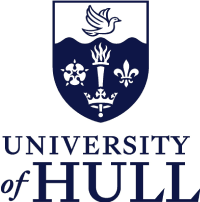About the Project
To celebrate the University's research successes, the University of Hull is offering one full-time UK/EU PhD Scholarship or International Fees Bursary for candidates applying for the above project based at the Hull campus of Hull York Medical School
Closing date: - 2nd February 2015.
Studentships will start on 28th September 2015
Cardiovascular diseases (CVD) such as heart attacks and strokes constitute the leading cause of mortality in the East Riding of Yorkshire, with a mortality rate for all persons of 166.5 per 100,000 (2008-10). Underlying CVD is the pathology known as atherothrombosis, a complex multi-cellular inflammatory disorder involving blood cells and the blood vessel wall. Central to atherothrombosis is the uncontrolled activation of blood platelets, which is why anti-platelet drugs such as aspirin have been so effective. While current anti-platelet therapy has successfully reduced the burden of disease, arterial thrombosis continues to cause significant mortality leading to a desire for other effective therapeutic interventions.
The aim of this project is to design a platelet specific system for drug delivery and multimodal imaging, based on nanoparticles. Such a system would have great therapeutic benefit due to the reduction in significant side-effects, whilst maintaining the effectiveness in thrombus formation reduction; it would also introduce the ability to image thrombus formation in vivo in real time using MRI and PET scanning. Agents combining therapeutic and diagnostic use in this way are known as "theranostic".
In this project the student will synthesise multimodal MRI/fluorescent nanoparticles conjugated with the platelet specific binding sequence, based on quantum dot / gold / liposome platforms. The student will initially use a range of in vitro techniques in order to demonstrate the specificity of the nanoparticle binding to the platelet, and then demonstrate the effective delivery of the drug to the platelet. Once platelet specific binding, and effective drug delivery has been established in vitro the student will then demonstrate the effect on thrombus formation in vivo, in order to demonstrate the effectiveness of the drug delivery system.
This multidisciplinary project will be based in the Calaminus lab (Centre for Cardiovascular Research, Hull campus of Hull York Medical School) for platelet studies and the Stasiuk lab ((Biological, Biomedical and Environmental Sciences) for chemical work. It would suit a student with a background in biochemistry, pharmacology, chemistry, or molecular medicine. It will provide an excellent opportunity to gain training in a wide range of both chemical and biological assays, including drug design, nanoparticle technology, platelet aggregation, thrombus formation assays, immunoblotting, and platelet secretion assays.
http://www.hyms.ac.uk/postgraduate/how-to-apply/current-postgraduate-opportunities
In order to qualify for this scholarship you will require an undergraduate degree with at least a 2.1, or equivalent, in a relevant subject.
Full-time UK/EU PhD Scholarships will include fees at the ‘home/EU' student rate and maintenance (£13,863 in 2014/15) for three years, depending on satisfactory progress.
Full-time International Fee PhD Studentships will include full fees at the International student rate for three years, dependent on satisfactory progress.
PhD students at Hull York Medical School follow modules for research and transferable skills development and gain a Masters level Certificate in Research Training, in addition to their research degree.
Successful applicants will be informed of the award as soon as possible and by 17th April 2015 at the latest.

 Continue with Facebook
Continue with Facebook

